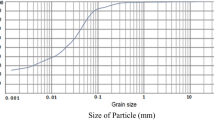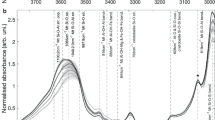Abstract
Research on colloidal properties of soils, especially of its clay and decayed organic matter components are pillars of edifice of soil science. The colloids control almost all soil reactions, but their behavior is controlled by dilution, change in pH, ion exchange, accretion of bases and many other processes, some of which are natural, while many others are anthropogenic. The anthropogenic manipulation of soils is the foundation of agrarian civilization, but spread into managed-forest, and urban ecosystems with time. In the twentieth century, great breakthroughs have been achieved in order to make soils more productive and responsive to environmental challenges. Historically, soil science as a discipline showed enormous capacity to absorb scientific advancement made in kindred disciplines into its body of knowledge. The X-ray diffraction and electron microscopic studies on clay particles in the last century exhibited nanoscale nature of the particles in all three dimensions. Therefore, it was but natural that clay and organic matter components of soils would be of primary concern to nanotechnology regardless of the field of activity – from physics to medicine. The added advantages of clay were their role in genesis of life on earth, and in evolutionary diversification of Neoproterozoic life forms. It was no wonder that many authors believe that nanoscience and nanotechnology sprouted from clay mineralogy and crystallography. Richard Feynman in his lecture, “There's plenty of room at the bottom: An invitation to enter a new field of physics” in 1959 envisioned that solid state materials, of which clay is a part, would be of great interest to nanotechnology.Nanofabrication involving clay is a distinct field, because it departs from the conventional field of nanotechnology (e.g., nanoelectronics, nanomaterials), and is far more challenging than conventional application fields (e.g., cell phone, computer, sensors, cloths, and other industrial products). This is because: (a) clay is an interface of the physical world and the world of life, and (b) soil is the central domain of geosphere, biosphere, atmosphere, and hydrosphere, and therefore, soil scientists have the responsibility to support life and protect the environment. For nanofabrication involving clays, methods followed in industry (like melting materials at a high temperature to segregate atoms / ions at plasma state) cannot be copied. It is no hindrance, because the system obeys the laws of ion exchange, adsorption-desorption, aggregation-dispersion, solubility-dissolution to name a few. The most vital yardstick is that the system has to be capable of releasing nutrient ions in plant-available forms. One of the key modules of nanofabrication is manipulation of bonds, which is a common phenomenon in soils. Clays have both covalent and ionic bonds; a feature unique for developing a passive control system for a nutrient supply mechanism. There are enormous numbers of examples in soils, where bonds are changed from one form to another through isomorphous substitution or insertion of small ions, or by the use of organic compounds (for masking of van der Waal’s force). Nanotechnology in the clay system does not promise a control system that we experience in electrical machines, or in satellites, or in chemical reactors. But, it has to be a knowledge-based passive system, and for sure, it is going to create millions of rhizospheres in an acre of land to support the growth of millions of plants for a crop; a breakthrough to place agriculture into the new millennium.
Similar content being viewed by others
Article PDF
Author information
Authors and Affiliations
Corresponding author
Rights and permissions
About this article
Cite this article
Mukhopadhyay, S. Nanotechnology: Giga game for soils. Nat Prec (2011). https://doi.org/10.1038/npre.2011.5791.1
Received:
Accepted:
Published:
DOI: https://doi.org/10.1038/npre.2011.5791.1



